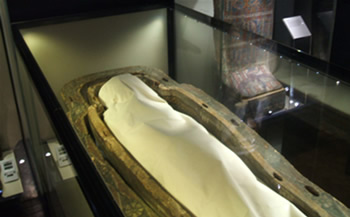Manchester Museum has enshrouded 3 mummies formerly displayed au naturel after some visitors complained.

The decision has been greeted with dismay, and not a little derision, by archaeologists and museum aficionados alike.
Josh Lennon, a museum visitor, said: “This is preposterous. Surely people realise that if they go to see Egyptian remains some of them may not be dressed in their best bib and tucker.
“The museum response to complaints is pure Monty Python – they have now covered them from head to foot, rendering the exhibition a non-exhibition. It is hilarious.”
Renown Egyptian archaeologist and secretary-general of Egypt’s Supreme Council on Antiquities Zawi Hawass, on the other hand, is all for the cover-up.
“Covering up the mummies is a very important decision. I myself am of this position on an ethical basis, not a religious one,” Hawass told reporters in Cairo.
“We don’t want people to see our naked bodies when we are dead, so why should we allow ourselves to view the bodies and expose them in this manner?” he asked.
Fair enough, but I seem to recall seeing rows upon rows of nekkid mummies under plexiglass at the Cairo Museum.
And really, what is the point of having them on display at all if they’re completely wrapped in modern cotton? Might as well just throw a bundle of sticks in there and call it Ramses.



 Workers building a sewage line in Galilee have
Workers building a sewage line in Galilee have 
